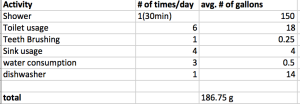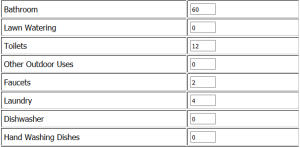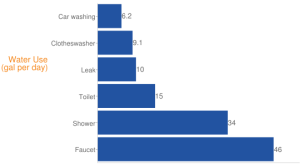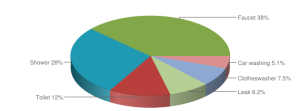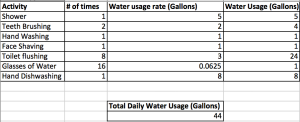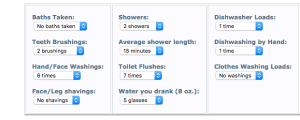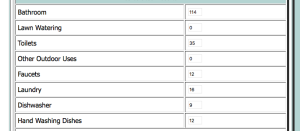1A)
My hometown is Perkasie, PA which is located about an hour outside of Philadelphia, PA. For some people in this course from Doylestown, PA I am about 15 minutes from them. In Perkasie, partially rural and urban there is a public water system provided by the Borough of Perkasie, this is the way that most people in town, businesses, and schools are supplied with water. The water system in Perkasie draws from small waterways we have running closely to the city also reservoirs that are not to distant from the systems themselves. I however live on a small, rural farm for which my family has a private well system. The community as a whole mostly uses the public water system which means they also are in usage of the public sewer system which takes the water used away from the houses and is processed at a separate location to be put back into the water system and reused by the town again. Personally my house because we have our own well we also have our own sewer system in which our water is recycled and used again.
1B)
| Use of Water: | Number of times daily: | Rate of Water Usage: | Daily Usage (Gallons): |
| Shower | 1 (10 mins) | 3.8 gal/min | 38 |
| Cooking | 2-3 (30 mins) | 1 gal/use | 30 |
| Personal Hygiene | 2 (1 min. per) | 2 gal/min | 4 |
| Toilet | 3 | 5 gal/use | 15 |
| Cleaning (Dishes, etc.) | 1 (2 min. per) | 2 gal/min | 2 |
| Drinking | 4 | .5 gal/use | 2 |
Total: 91 Gallons/Day
1C)
The areas of water usage for this experiment are all of the above in my chart, showering, cleaning, cooking, hygiene, toilet usage, drinking, and cleaning. To start this experiment I would begin by prioritizing my water usage. I believe that my top priority would have to be consumption, meaning my daily water intake for my body. The next would probably be cooking and hygiene. Although it would be difficult, living with only two gallons of water available, I would need to limit myself on non-necessary daily water luxuries such as daily showers, laundry, cleaning, and even toilet usage. Some strategies I would use in this experiment are using the absolute minimal amount of water for each task and also having a way to catch the water after usage so I could purify it and reuse the available left. I believe that in our society this experiment would unfortunately fail, this is often due to our social “norms”. It is a social norm to shower daily to be presentable for school or work. Also to brush your teeth and keep your home clean, along with using the toilet. Unless someone spends their day not fulfilling the social norms I do not think it is possible to complete this experiment in the current society we live in. This expeiment compared to part B is the other extreme end of being limited on water, as of now which we are not limited and use water as we please. Geography matters relating back to my earlier statement in which I talked about society “norms”, in countries in which the water resource is limited also have different norms then us, potentially changing the amount of water they are required to use on a daily basis to fulfill the social norms.

